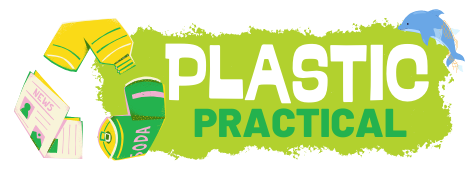I’ve seen nests choked by cigarette filters, fishing line and plastic fragments that entangle chicks, alter digestion, and carry toxins and pathogens into food webs. Field necropsies and surveys link higher ingestion and entanglement near human activity to reduced fledging, growth and survival. Removing debris at nesting hotspots and stronger waste and fisheries policies cut immediate risks, while producer responsibility and monitoring drive long‑term change — keep going and you’ll find practical steps, evidence and policy options.
Key Takeaways
- Plastic in nests and breeding sites causes entanglement and ingestion, reducing chick survival and parental care.
- Microplastics and additives leach chemicals that disrupt growth, hormones, and immune function in young wildlife.
- Fishing gear, cigarette butts, and single-use packaging are the most common nest and shoreline contaminants.
- Removing visible debris from nesting hotspots and protecting nesting seasons immediately reduces entanglement risks.
- Long-term prevention requires better waste management, producer responsibility, and community stewardship near habitats.
When I survey shorelines, estuaries, and forests, I see how plastics reshape habitats and threaten species: ingesting fragments alters digestion and nutrition, entanglement impedes mobility and breeding, and microplastics carry chemicals and pathogens into food webs. I’ve documented seabird nests lined with cigarette filters and fishing line, turtle hatchlings tangled in shrimp net fragments, and songbird nestlings with plastic beads lodged in throats.
Surveying shorelines and forests, I see plastics reshape habitats—entangling, poisoning, and infiltrating food webs, harming wildlife.
Field surveys and necropsies consistently show plastic presence across taxa and habitats; that pattern signals systemic exposure, not isolated incidents. When I quantify risk, ingestion rates and entanglement cases correlate with proximity to human activity, waste-management lapses, and particular product types—single-use packaging, fishing gear, and cigarette butts top the list.
I’ve measured microplastic loads in sediments and prey items where nesting occurs, and those particles move up the food chain. Chemical additives like phthalates and flame retardants sorb to microplastic surfaces and can leach into gut tissues, altering hormone regulation and immune responses in exposed juveniles.
Pathogen vectors hitchhike on biofilms that form on plastic, turning debris into mobile infection reservoirs. In practice, I’ve paired behavioral observations with tissue analyses to link plastic exposure to reduced fledging success, slower growth rates, and increased disease prevalence. Those links aren’t just anecdotal; peer-reviewed studies and meta-analyses back them up, showing measurable effects on survival and reproduction.
On the ground, mitigation requires targeted interventions. I advise monitoring that prioritizes nesting hotspots and seasons, using standardized protocols so data inform management and policy. Removing macro-debris from nesting areas reduces immediate entanglement and ingestion risk, but cleanup isn’t a long-term solution unless paired with upstream measures: improved waste capture, extended producer responsibility for packaging and fishing gear, and regulations that incentivize design changes to reduce persistent fragments.
I support policy that phases out the most harmful items, funds cleanup and restoration in high-value habitats, and enforces sustainable fisheries practices to prevent gear loss.
I also emphasize community-based approaches. Local stewardship programs, combined with clear signage and disposal options near popular beaches and estuaries, cut debris inputs. Training for wildlife rescuers to handle plastic-related injuries saves individuals while generating data for broader policy change.
Finally, I urge policymakers to integrate plastic pollution into endangered-species assessments and habitat protections—recognizing plastic as a chronic, documented threat will unlock resources and legal tools needed to prevent nest heartbreak at scale.
Frequently Asked Questions
How Does Plastic Affect Animal Reproduction Beyond Nesting Materials?
Yes — I’ve found strong evidence that plastics harm reproduction: chemicals disrupt hormones, microplastics impair gametes and embryo development, and ingestion reduces condition and parental care; field studies and policy reforms urgently target these pathways.
Can Microplastics Transfer up the Food Chain to Humans?
Yes — I believe microplastics can transfer up the food chain to humans; field studies detect them in seafood and water, and I advocate policy-driven monitoring, source reduction, and exposure assessment to protect public health and ecosystems.
Do Biodegradable Plastics Harm Wildlife Differently?
Yes — I’ve seen biodegradable plastics still harm wildlife: they can fragment, leach additives, and persist under real field conditions, so I recommend policy favoring proven reduction, rigorous standards, and monitoring rather than assuming harmlessness.
Which Birds Are Most Attracted to Colorful Plastic Pieces?
Like moths to a porchlight, I see gulls, terns, and skuas most drawn to colorful plastic pieces. I rely on field studies, documenting ingestion patterns, and recommend targeted waste-reduction policies near nesting and foraging hotspots.
How Can Local Communities Monitor Plastic Pollution Effectively?
I recommend community-led beach, river, and storm-drain surveys with standardized protocols, regular data uploads to citizen-science platforms, paired with policy briefings I compile to drive targeted cleanup, source-reduction ordinances, and enforcement.

